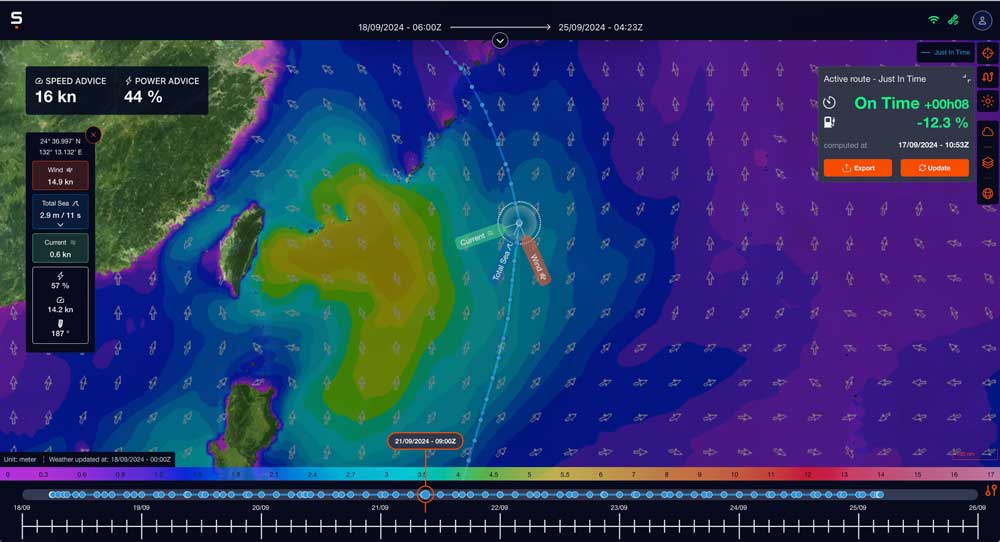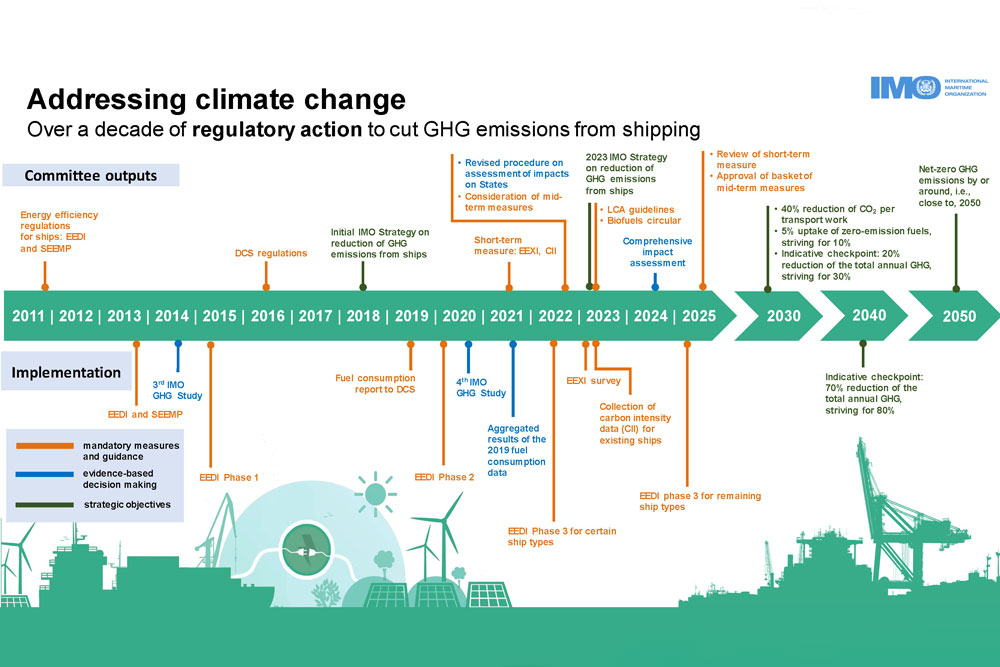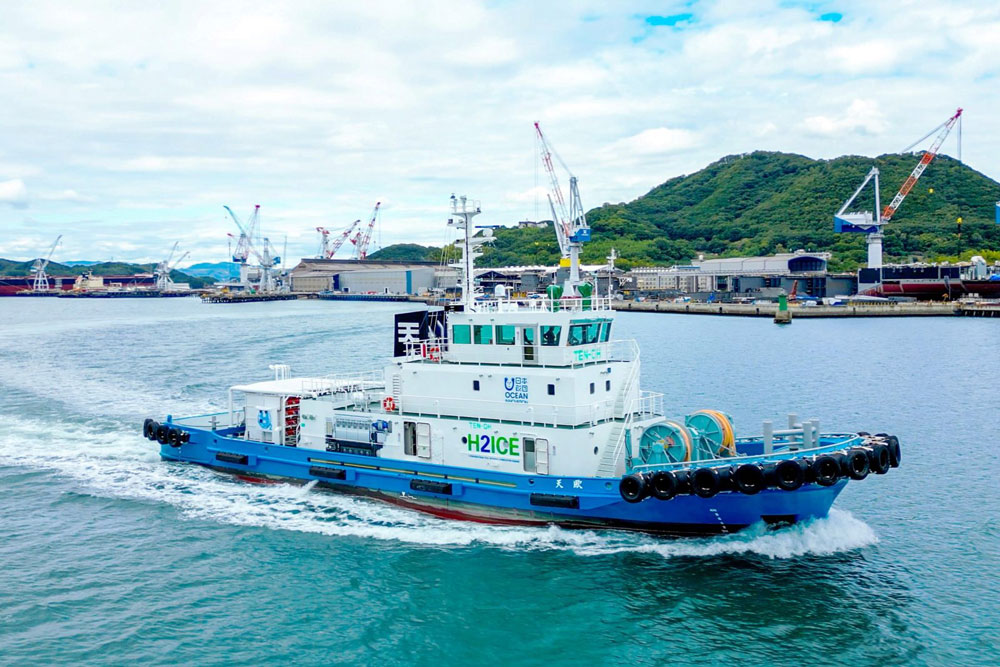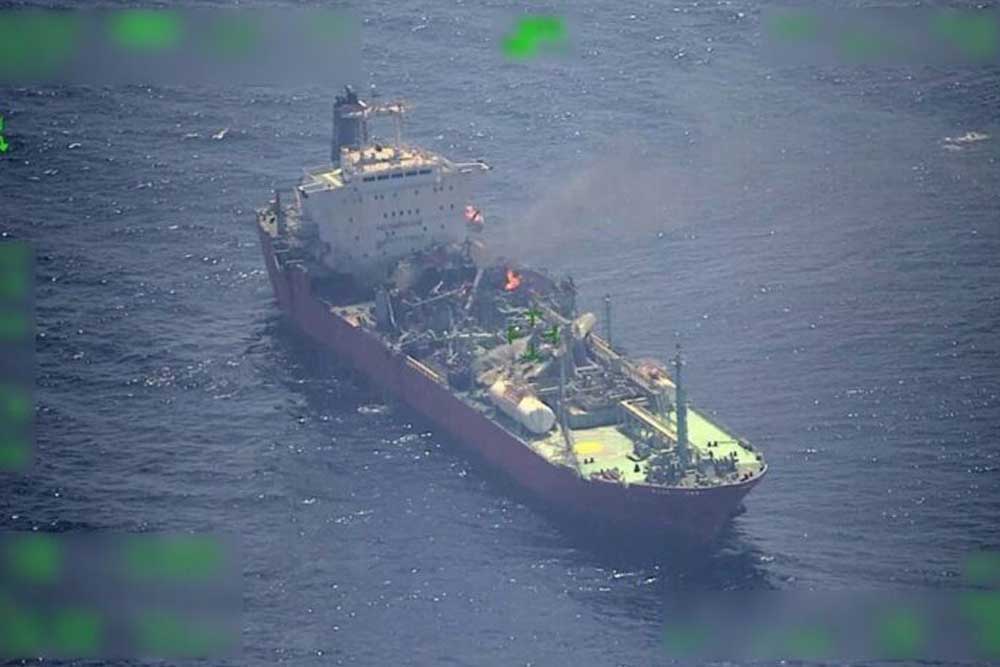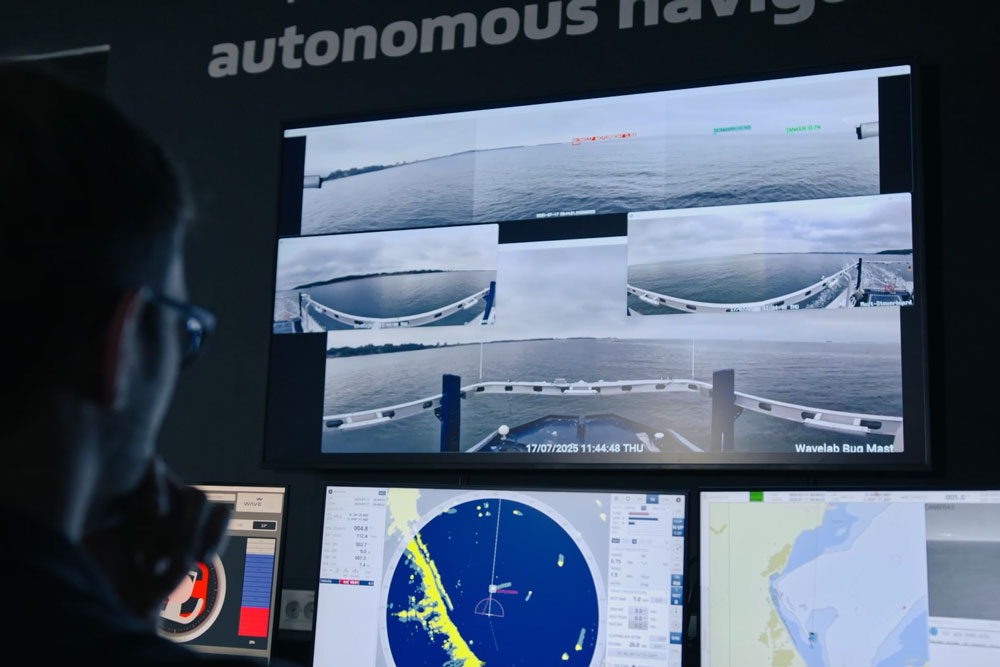While the need for alternative fuels has become almost universally acknowledged, many shipowners still shy away from digital solutions to increase efficiency. Syroco CEO Alex Caizergues explains why they’re missing out.
Syroco has just opened a new regional headquarters in the Port of Hamburg. How does this strategic move fit into your broader European expansion plans, and what role do you see Hamburg playing in Syroco’s future growth?
Alex Caizergues: Hamburg was an obvious choice for our expansion phase, as it is Europe’s third-largest port. As a climate tech company that specialises in voyage optimisation and weather routing, opening a new regional headquarters in Hamburg made perfect sense. In particular, it reflects our strategic commitment to expanding our presence in key maritime hubs across Europe.
Hamburg feels like a natural fit for Syroco as it is a recognised leader in maritime innovation and home to many shipowners, some of whom are already using our solutions. We have several clients in Germany, including United Heavy Lift (UHL), Oldendorff and BBC Chartering.
This new base will springboard deeper collaboration with regional shipping operators as well as increase our proximity to customers. It also positions us at the heart of Europe’s green maritime transition, enabling faster deployment of our solutions and stronger participation in decarbonisation initiatives.
We have appointed Florian Schäffer as Country Manager to spearhead Syroco’s operations in Germany. He brings over 10 years of experience in business development and strategic growth in the technology space, and will be responsible for expanding the adoption and usage of the company’s voyage optimisation software, Syroco Live, and also growing Syroco’s customer base across Germany.
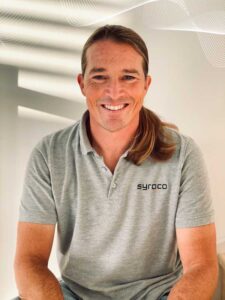
Following your successful € 7.5 million Series A funding round, what are your immediate priorities in terms of R&D, partnerships, and market deployment?
Caizergues: Our new Hamburg location is part of Syroco’s ongoing expansion plans to more than double the number of ships that use our platform by the end of 2025. We had two important priorities following the funding round, and those were to scale our presence in major shipping hubs and to accelerate product development. We have been able to make increased R&D investment so that we continue to evolve our voyage optimisation platform, Syroco Live, to meet changing industry demands as the shipping sector modernises and drives toward more sustainability.
We have also been focused on scaling our operations and go-to-market capacity to serve the growing demand for digital decarbonisation solutions, both by addressing new accounts and by supporting the fleet-scale deployments of our existing clients.
Digitalisation is increasingly seen as a catalyst for maritime decarbonisation. How is Syroco’s technology helping shipowners and operators achieve both regulatory compliance and operational efficiency?
Caizergues: Syroco‘s technology plays a vital role in helping shipowners and operators simultaneously achieve operational efficiency and regulatory compliance. Our platform creates a unique digital twin of each vessel, offering predictive modelling of energy performance in real-world conditions. This empowers shipowners and operators to make real-time, data-driven decisions that reduce fuel consumption and emissions, and enhance safety, all by using the software alone. The net result is not only emissions and cost reduction but also improved compliance with critical regulatory requirements such as CII, EU ETS, FuelEU, and the future IMO Net-Zero Framework.
The maritime industry has a clear commitment to reducing its environmental impact and must leverage every available tool to achieve these goals. The IMO GHG Strategy, aiming for net-zero GHG emissions by 2050, and the IMO’s proposed mandate for a global strategy for maritime digitalisation set clear targets that necessitate early action for a smooth transition.
While low-carbon marine fuels will undoubtedly contribute to meeting these objectives, there is also significant scope for technology providers like us to offer pathways for the industry to evolve, modernise, and ‘greenify’ shipping. These new fuels are challenging to source and will be extremely expensive, making fuel consumption reduction not only beneficial for lowering emissions but also crucial for reducing operating costs and assisting with compliance. It truly is a win-win-win situation; there is simply no downside to making shipping operations more efficient.
Digital solutions providers such as Syroco that are capable of providing insights and data to make this achievable are already proving to be crucial in this transitional period as shipping moves towards its 2050 targets.
Many shipowners are hesitant about investing in emerging digital tools. How do you address the ROI question—demonstrating that digital solutions can deliver tangible savings and emission reductions today?
Caizergues: We recognise that shipowners may be hesitant about the return on investment (ROI) of digital tools. Our strategy is designed to provide immediate, tangible value. Clients have seen an average of 10 % fuel savings, which amounts to about € 3-5 million on average, without requiring any hardware modifications. These savings not only lower operating expenses (OPEX) but also enhance regulatory compliance and ratings, which in turn boost long-term vessel value and charter appeal.
To ensure our customers clearly understand their ROI, we provide comprehensive, data-driven reports to enable fleet management to thoroughly assess value added, savings, and route optimisation. These reports detail the solution‘s usage and the concrete savings achieved. For instance, a report might illustrate the positive or negative impact of currents on specific voyage segments, or how a minor route adjustment averted stronger waves and higher fuel consumption. The accuracy and relevance of these calculations are further enhanced by our platform‘s integration with onboard sensor data.
Syroco Live requires no capital investment or retrofitting. The software is simple to set up, and training takes only 30 minutes. Vessels can be onboarded within 24 hours, with proven results observed in just a few voyages.
Alternative fuels remain a critical piece of the decarbonisation puzzle, but their adoption is still years away at scale. How does Syroco’s approach help bridge the gap in the near term?
Caizergues: Alternative fuels are indeed critical for long-term decarbonisation, but they require infrastructure, supply chain maturity, and sometimes significant retrofit investment. Syroco bridges this near-term gap by maximising the efficiency of existing assets and fuels. This gives shipowners a roadmap to improve their carbon intensity today, while preparing for future transitions to new propulsion systems. Not only is our platform fuel-agnostic, it is also designed to evolve alongside emerging propulsion methods, ensuring that investments made today remain relevant tomorrow.
It is also worth noting that the cost premiums of alternative fuels – often two to five times higher than conventional fuels – pose a significant barrier, especially in a highly competitive freight market. When using these fuels, any gain in consumption is multiplied by the same factor, and the ROI of voyage optimisation becomes even faster to achieve. We have had some good results with wind propulsion systems. Our AI-powered platform amplifies the benefits of wind propulsion technology by empowering operators with reliable, real-time data and insights. This enables them to easily make advanced calculations with reduced operational complexity, resulting in less fuel consumption, better sustainability levels, and greater savings.
The IMO’s new Net-Zero Framework puts significant pressure on the industry to accelerate emissions reductions. Where do you see the biggest opportunities for “readily available” technological transformation in the next 3–5 years?
Caizergues: The IMO’s Net-Zero Framework introduces urgency – but also opportunity – for shipping to adopt ready-now solutions. In the next three to five years, we see the greatest impact coming from digital solutions such as voyage optimisation or performance-based routing. We also believe that topics such as AI-assisted retrofit planning or hull cleaning can be low-barrier and high-impact. In any case, data will be at the core of any transformation, and we see AI playing a huge role too.
With the MEPC meeting coming up in October, what key policy decisions are you most closely watching, and how might they shape Syroco’s roadmap?
Caizergues: During the upcoming MEPC meeting, we will be closely following discussions around the financial costs of non-compliance and the timeline for implementing the new measures. We will also be keenly observing discussions regarding the wind reward factor, an element we believe warrants greater recognition due to the substantial energy savings it generates.
The outcomes of these deliberations could significantly shape the assessment and incentivisation of decarbonisation efforts. In anticipation, we are proactively aligning our platform to accommodate these evolving policies and regulations. We foresee these advancements driving a notable increase in demand for software solutions such as Syroco’s, especially as compliance becomes increasingly tied to economic incentives or disincentives.
From your perspective, are current IMO regulations sufficient to incentivise innovation, or does the industry need more aggressive frameworks to truly drive digital adoption and decarbonisation?
Caizergues: IMO regulations have made progress but fall short in some areas – particularly in driving proactive adoption of digital solutions. We believe even stronger incentives and better data transparency will be key.
This is why digital solutions need to be able to demonstrate and validate performance improvements across fleets and voyages. Incentivising innovation at scale will require a blend of mandatory standards and flexible performance-based mechanisms.
Shipowners are seeking solutions that keep their fleets competitive and future proof. What differentiates Syroco’s platform in helping maritime stakeholders stay ahead amid tightening environmental regulations?
Caizergues: The first thing that sets Syroco apart is our data-driven, physics-based, real-time digital twin, which models the exact energy behaviour of a vessel in any operating condition.
The other key differentiator is that we provide a crew-driven platform, designed to be used by bridge officers in real navigation conditions, and to provide actionable recommendations. We closely monitor the adoption and follow-up of the route and vessel parameters. The platform is low-friction to deploy, easy to learn and to use, and its adoption generates the highest possible performance improvements.
Looking beyond compliance, what does the maritime industry of 2030 look like to you, and what role do you envision Syroco playing in that transformation?
Caizergues: By 2030, we envision a maritime industry that is data-driven, digitally native, carbon-accountable, and performance-optimised by default.
Syroco aims to be the technology backbone of this transformation, enabling shipping companies to operate greener, leaner, more safely and more competitively. We envision our solution to be a key enabler for the industry‘s climate targets – a platform that ships, fleets, and charterers rely on daily to optimise performance, reduce carbon, and maintain competitive advantage in an evolving regulatory and commercial environment.
Interview: Jannik Westerkamp
